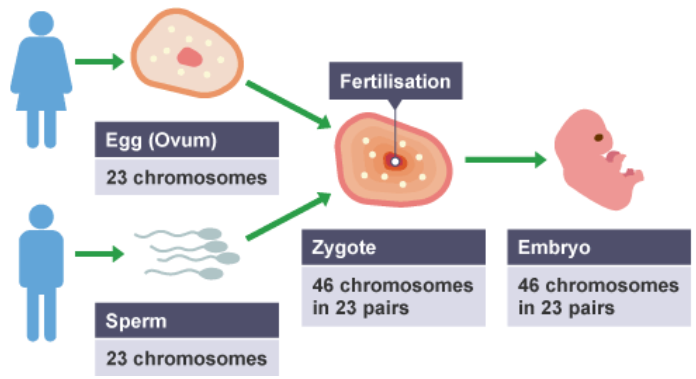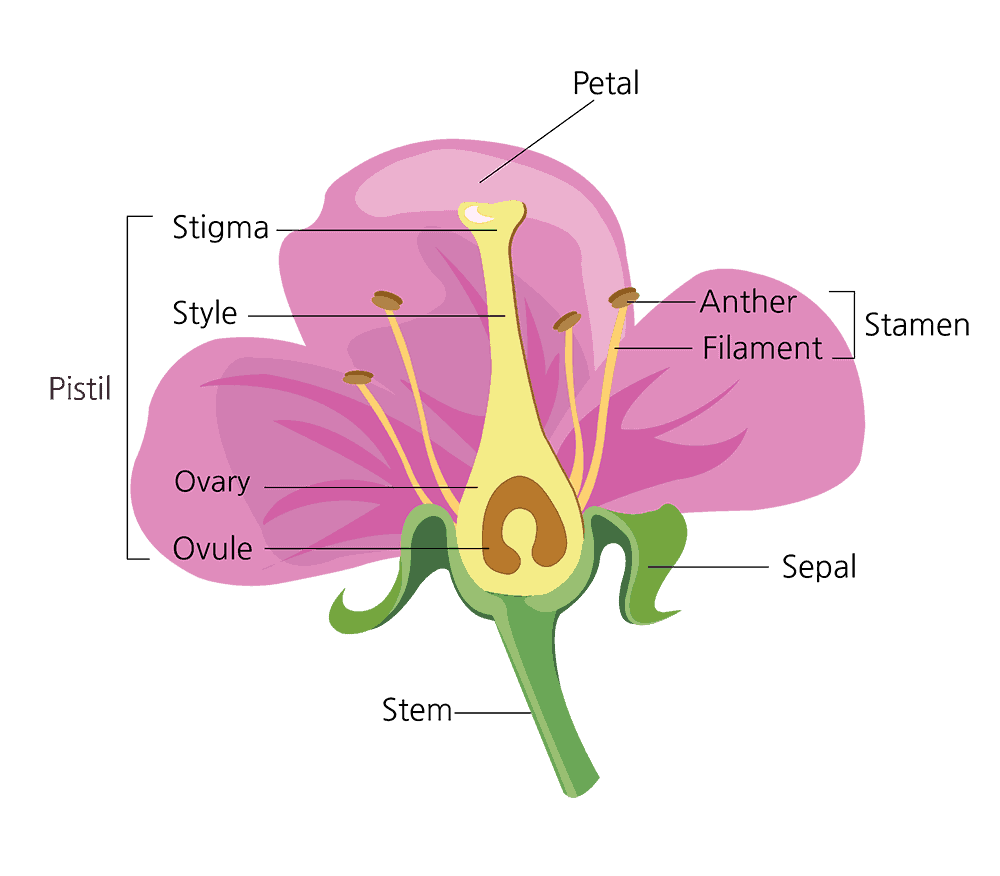Bio IGCSE (3)
Bio IGCSE (3)
3 - Reproduction & Inheritance
(a) Reproduction (Plants)
Sexual Reproduction VS Asexual Reproduction
Sexual reproduction is the fusion of male and female gametes during fertilisation to produce non – identical offspring that inherit characteristics from both parents
Advantages | Disadvantages |
Increases variation | Takes time and energy to find mates |
The species can adapt to new environments due to the variation - a survival advantage | Difficult for isolated members of the species |
Any disease is less likely to affect the population (due to variation) |
Asexual reproduction does not involve sex cells or fertilisation
Only one parent is required so there is no fusion of gametes and no mixing of genetic information
As a result, the offspring are genetically identical to the parent and to each other (clones)
Advantages | Disadvantages |
The population can be increased rapidly with the right conditions | No genetic variation in a population |
Can exploit suitable environments quickly | The population is vulnerable to changes in conditions and may only be suited for one habitat |
More time and energy efficient | Any disease is likely to affect the whole population (as there is no genetic variation) |
Reproduction is completed much faster than actual sexual reproduction |
Fertilisation
A gamete is a sex cell (in animals: sperm and ovum; in plants pollen nucleus and ovum)
Gametes differ from normal cells as they contain half the number of chromosomes found in other body cells
This is because they only contain one copy of each chromosome, rather than the two copies found in other body cells

- In human beings, a normal body cell contains 46 chromosomes but each gamete contains 23 chromosomes
- When the male and female gametes fuse, they become a zygote (fertilised egg cell)
- This contains the full 46 chromosomes, half of which came from the father and half from the mother
- The zygote divides to form two new cells, which then continue to divide and after a few days form an embryo
- Cell division continues and eventually many of the new cells produced become specialised to perform particular functions and form all the body tissues of the offspring
Reproduction in Flowering Plants
Flowers are the reproductive organ of the plant
They usually contain both male and female reproductive parts
Plants produce pollen which contains a nucleus inside that is the male gamete
Unlike the male gamete in humans (sperm), pollen is not capable of locomotion (moving from one place to another)
This means plants have to have mechanisms in place to transfer pollen to the female parts of another flower
This process is known as pollination and there are two main mechanisms by which it occurs: transferred by insects (or other animals like birds) or by wind
The structure of insect and wind-pollinated flowers are slightly different as each is adapted for its specific function

Sepal | Protects unopened flower |
Petals | Brightly coloured in insect-pollinated flowers to attract insects |
Stamens | The male part of the flower, consisting of filament and anther |
Filament | Positions anther to release male sex cell (pollen grain) |
Anther | Produces and releases the male sex cell (pollen grain) |
Carpel | The female part of the flower, consisting of stigma, style and ovary (containing the ovule) |
Stigma | Top of the female part of the flower which collects pollen grains |
Style | Connects the stigma to the ovary |
Ovary | Produces the female sex cell (ovum) |
Ovule | Contains the female sex cells (found inside the ovary) |
Nectary | Produces a sugary solution called nectar to attract insects |
Germination
Germination is the start of growth in the seed
Three factors are required for successful germination:
- Water – allows the seed to swell up and the enzymes in the embryo to start working so that growth can occur
- Oxygen – so that energy can be released for germination
- Warmth – germination improves as temperature rises (up to a maximum) as the reactions which take place are controlled by enzymes
As CO2 is not necessary for germination but also does not inhibit it, it makes no difference whether it is present or not
Investigating Germination
- Set up 4 boiling tubes each containing 10 cress seeds on cotton wool
- Set each test tube as shown in the diagram below
- Leave tubes in a set environment for a period of time: A, B and C incubated at 20°C; D placed in a fridge at 4°C
- Compare results and see which tube has the greatest number of germinated seeds
(a) Reproduction (Humans)
Male Reproductive System
Glands | Produces fluids called semen that provide sperm cells with nutrients |
Sperm Duct | Sperm passes through the sperm duct to be mixed with fluids produced by the glands before being passed into the urethra for ejaculation |
Urethra | A tube running down the centre of the pets that can carry out urine or semen, a ring of muscle in the urethra prevents the urine and semen from mixing |
Testis | Contained in a bag of skin (scrotum) and produces sperm (male gamete) and testosterone (hormone) |
Penis | Passes urine out of the body from the bladder and allows semen to pass into the vagina of a woman during sexual intercourse |
Female Reproductive System
Oviduct | Connects the ovary to the uterus and is lined with ciliated cells to push the released ovum down it. • Fertilisation also occurs here. |
Ovary | Contains ova (female gamete) which will mature and develop when hormones are released |
Uterus | Muscular bag with a soft lining where the fertilised egg (zygote) will be implanted to develop into a foetus |
Cervix | Ring of muscle at the lower end of the uterus to keep the developing foetus in place during pregnancy |
Urethra | A tube that passes urine out of the body from the bladder |
Vagina | A muscular tube that leads to the inside of the woman’s body, where the male’s penis will enter during sexual intercourse and sperm are deposited. |